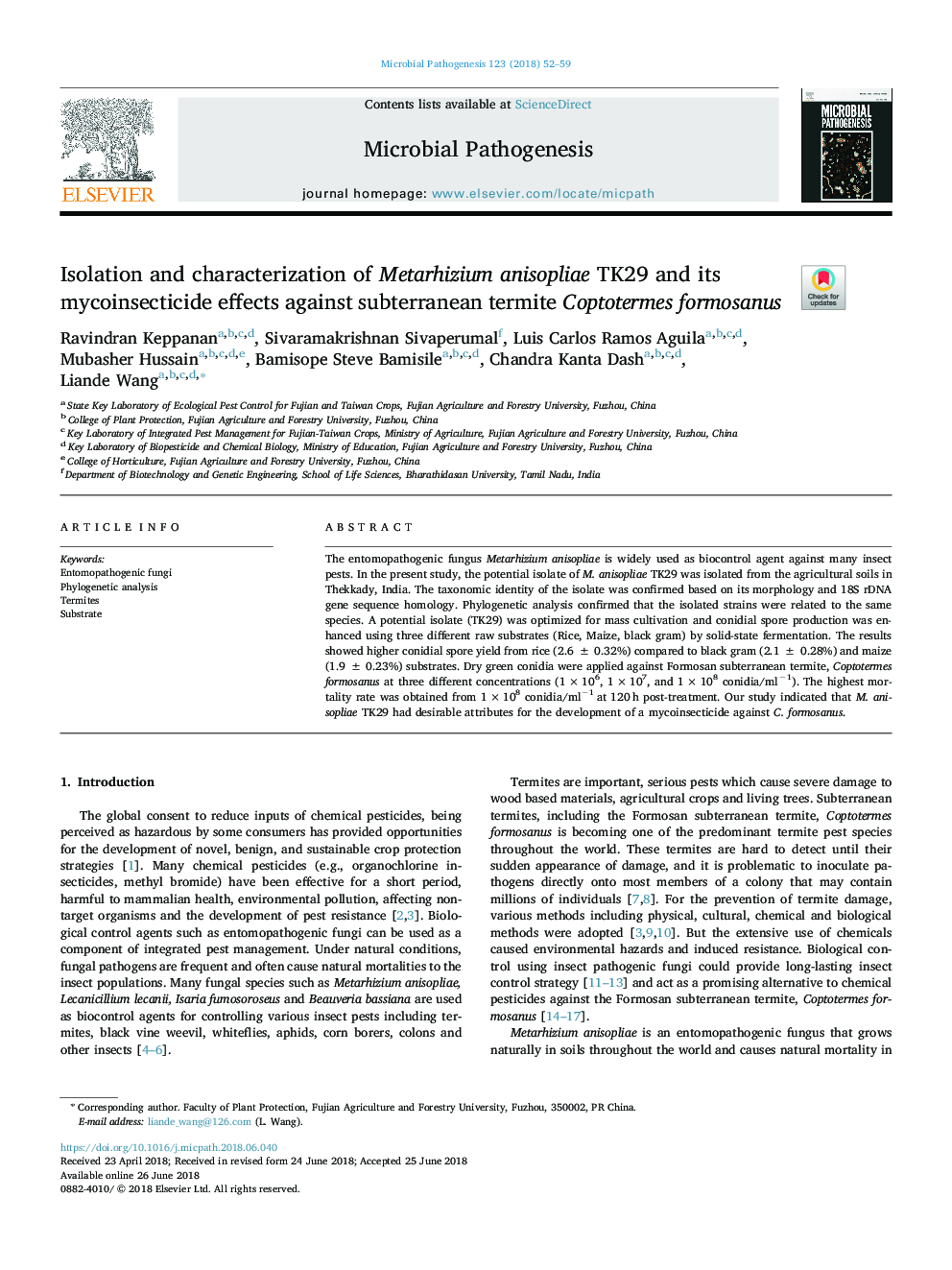| Article ID | Journal | Published Year | Pages | File Type |
|---|---|---|---|---|
| 8749226 | Microbial Pathogenesis | 2018 | 8 Pages |
Abstract
The entomopathogenic fungus Metarhizium anisopliae is widely used as biocontrol agent against many insect pests. In the present study, the potential isolate of M. anisopliae TK29 was isolated from the agricultural soils in Thekkady, India. The taxonomic identity of the isolate was confirmed based on its morphology and 18S rDNA gene sequence homology. Phylogenetic analysis confirmed that the isolated strains were related to the same species. A potential isolate (TK29) was optimized for mass cultivation and conidial spore production was enhanced using three different raw substrates (Rice, Maize, black gram) by solid-state fermentation. The results showed higher conidial spore yield from rice (2.6â¯Â±â¯0.32%) compared to black gram (2.1â¯Â±â¯0.28%) and maize (1.9â¯Â±â¯0.23%) substrates. Dry green conidia were applied against Formosan subterranean termite, Coptotermes formosanus at three different concentrations (1â¯Ãâ¯106, 1â¯Ãâ¯107, and 1â¯Ãâ¯108 conidia/mlâ1). The highest mortality rate was obtained from 1â¯Ãâ¯108 conidia/mlâ1â¯at 120â¯h post-treatment. Our study indicated that M. anisopliae TK29 had desirable attributes for the development of a mycoinsecticide against C. formosanus.
Related Topics
Life Sciences
Immunology and Microbiology
Microbiology
Authors
Ravindran Keppanan, Sivaramakrishnan Sivaperumal, Luis Carlos Ramos Aguila, Mubasher Hussain, Bamisope Steve Bamisile, Chandra Kanta Dash, Liande Wang,
